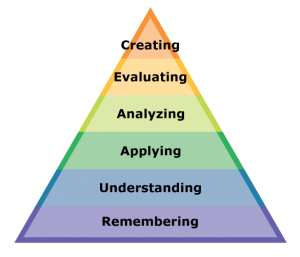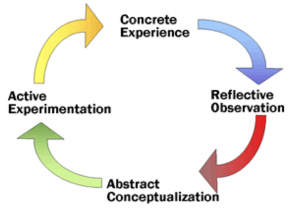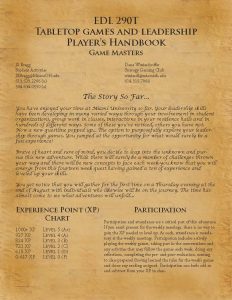As much as I would like to claim that JS and I are super famous researchers (NOT!), it is important to situate our philosophical foundation for the course and giving credit where credit is due.
We used 4 main philosophical views to build our course. (Although, JS would say we just made it and named the researchy-things later…) I will take a moment to share each of these philosophies, theories and models for those of you who are interested in the more technical side of things:
- Bloom’s Taxonomy: This model is in the shape of a pyramid and believes that students move towards the top of the pyramid as students better understand and comprehend the material. At the bottom of the pyramid is the remembering stage. A student is at this stage if they are able to regurgitate a piece of information. However, moving up the pyramid, we find application. If a student can apply the knowledge they previously could regurgitate to a new solution, they are believed to be at this stage.We chose to use Bloom’s Taxonomy because we believe it is important to meet students where they are and want to provide opportunities for students to grow no matter where they are on this pyramid throughout the experiences while providing the necessary support along the way. Throughout the course, the students have the opportunity to read the rules of the games (remember rules), play the games (understand), submit blogs on their assignments/reviews of home games (apply and analyze and evaluate), and even create their own game as a final assignment (create). The students choose how quickly they move along the pyramid based on previous experience and desire for deeper learning.

- Kolb’s Model of Experiential Learning: Building from Bloom’s Taxonomy, we wanted something that supported the how of what we were doing. Bloom gave us many base-level ideas of what we wanted to achieve, but we needed to know how- which is where Kolb’s model comes in to play. Kolb’s Model of Experiential Learning shows how students can approach a experience to get the most learning out of it. The first step is to have an experience- the actual event happening. The next step is to have a reflective observation: write or communicate exactly what happened. Next, there is abstract conceptualization. Here, we ask why something happened when we participated in the experience. The last step (although, it is encouraged to repeat the whole process) is active experimentation. During this step, students are encouraged to think of ways to alter the experiment that would alter the outcome.This model (as well as our love of games) is the whole basis of why we are using actual games and gamification in the classroom. Hands-on experience where the students control their experience points (grades) and how the games play-out in the classroom. Students are playing together, recording what happens through writing weekly observations, reflecting on their thoughts, and altering the games through their home assignments are gaining these experiences tenfold!

- Gamification: Okay, this is where it starts to get tricky. Did you know game-based learning and gamification are different? Gamification is using gaming concepts in the experience you are creating. For example, our course has opportunities for students to earn more XP (gradepoints) by choosing their own quests (assignments) they want to complete. Additionally, we have created a Rule Book rather than a course syllabus that outlines the journey (course) they are about to embark on throughout the semester. Gamification helps to motivate even those who are not self-proclaimed game-nerds (as JS and I claim to be) become more motivated in whatever experience we take part in. Motivation by gamification seems like a stretch? Check out this article from Forbes.

The Player’s Handbook (Syllabus) for EDL 290T.
- Game-Based Learning: Now, for the other half… Wikipedia may say it simplest: Game based learning is game play with defined learning outcomes. (Seriously- why doesn’t this site get more credit for how helpful it is?) JS and I didn’t program the games we chose only because we liked them… We chose these games because we had certain outcomes we want students to come to discover and believe they best provide the experiences that help students get there! For example, we are using the game Ladies and Gentlemen. Yes, the students are learning to play the game in particular. However, we also have specific reflection questions that speak directly to sex, gender, and racial roles that are presented and appropriated throughout the play of the game. Is this okay? How could this be changed in future printings if they were the producers? Is this seen in other games they’ve played before? There is so much to learn from gaming experiences!

For those of you who survived this post, congratulations! Similarly to a personality test, you may have a brain more built like mine than JS’s. As I have said in previous posts, he’s the creativity and I am the structure. It takes both to build something as awesome as this class!
I talk a lot about the how in this post, but still, a large how is missing…. how we paid for the class coming to fruition. However, this is a “how” that will need to wait for fresh (digital) paper.

